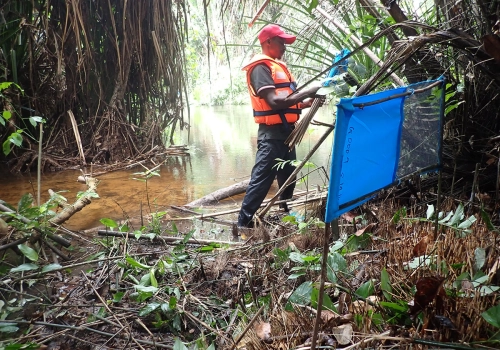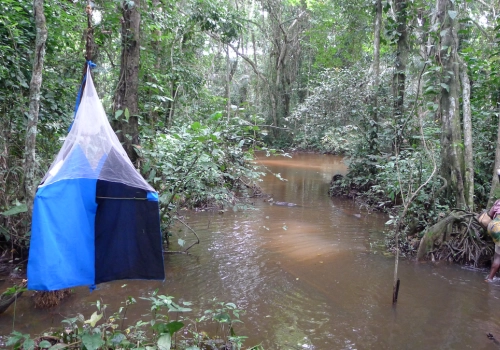Tiny Targets
Vector control to help stamp out sleeping sickness

Driving disease elimination
Tiny Targets are compact, insecticide-treated panels, used to control the tsetse flies that transmit sleeping sickness (human African trypanosomiasis), a neglected tropical disease (NTD) endemic to sub-Saharan Africa. Designed based on research showing tsetse flies’ strong attraction to a specific shade of blue, they are placed in fly-dense areas near rivers and breeding sites, reducing tsetse fly populations significantly.
The TrypaNO! and TrypElim partnerships aim to drive cases to zero by integrating tsetse fly control into a “screen, diagnose and treat” strategy. With partners including the Liverpool School of Tropical Medicine, IRD, FIND, and the Institute of Tropical Medicine (ITM), we contribute to TrypaNO! and TrypElim by manufacturing and donating up to 150,000 Tiny Targets every year, in support of the World Health Organization elimination goals.
Key features of Tiny Targets
Low-cost, easy to deploy, and scalable across diverse environments
Strategic placement ensures targeted impact without widespread insecticide use
Since 2020, Vestergaard has donated up to 150,000 Tiny Targets every year to support sleeping sickness elimination

Traps for tsetse fly surveillance

To monitor the efficacy of Tiny Targets, biconical and Vavoua insecticidal traps are deployed to see how many tsetse flies remain present in the area.
These traps catch and kill the tsetse flies, and researchers or public health professionals are then able to count them—and check if the sleeping sickness parasite is present.
Reaching the last mile
The use of Tiny Targets has been instrumental in reducing sleeping sickness transmission, but continued efforts are essential. Sleeping sickness remains a threat in remote areas, and maintaining vector control, surveillance, and treatment access is critical to reaching the goal of elimination of transmission by 2030.
A signatory of the Kigali Declaration to end NTDs, we remain committed to supporting this goal by ensuring that Tiny Targets remain accessible to communities at risk. By working alongside partners, we will continue to push toward a future where sleeping sickness is no longer a public health concern.
How can innovation, research and partnership help eliminate sleeping sickness?
Learn how vector control and collaboration are bringing sleeping sickness closer to elimination.